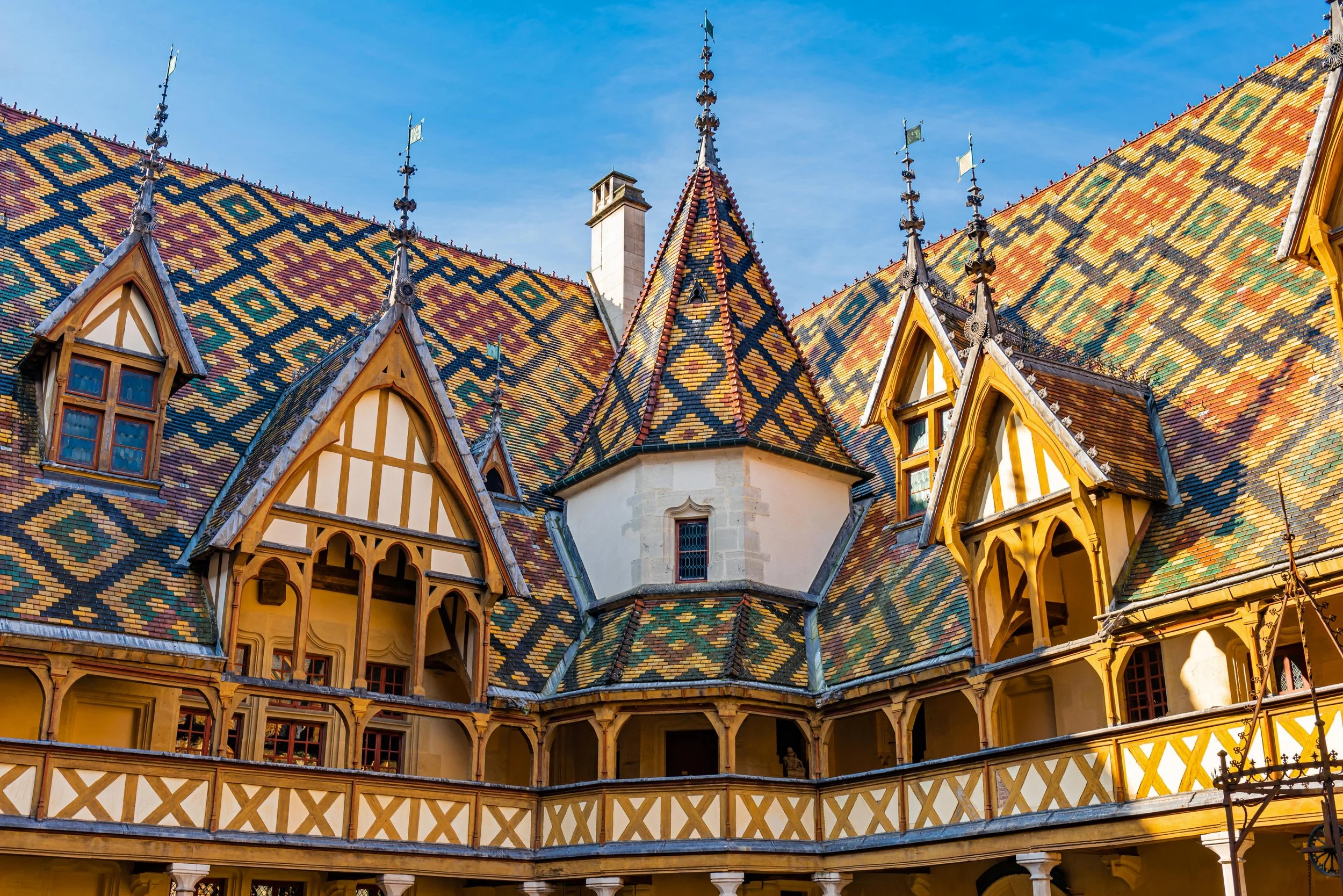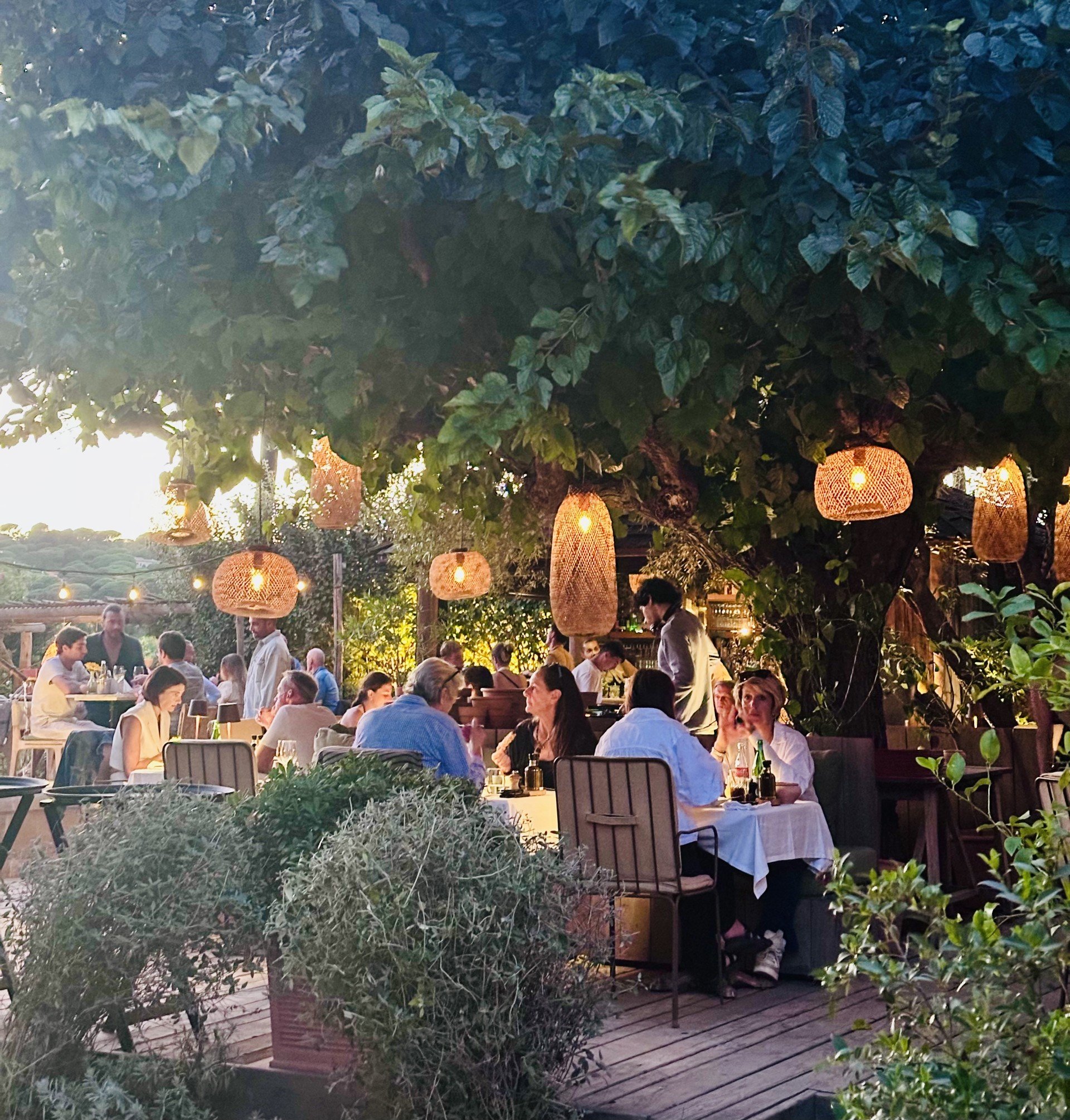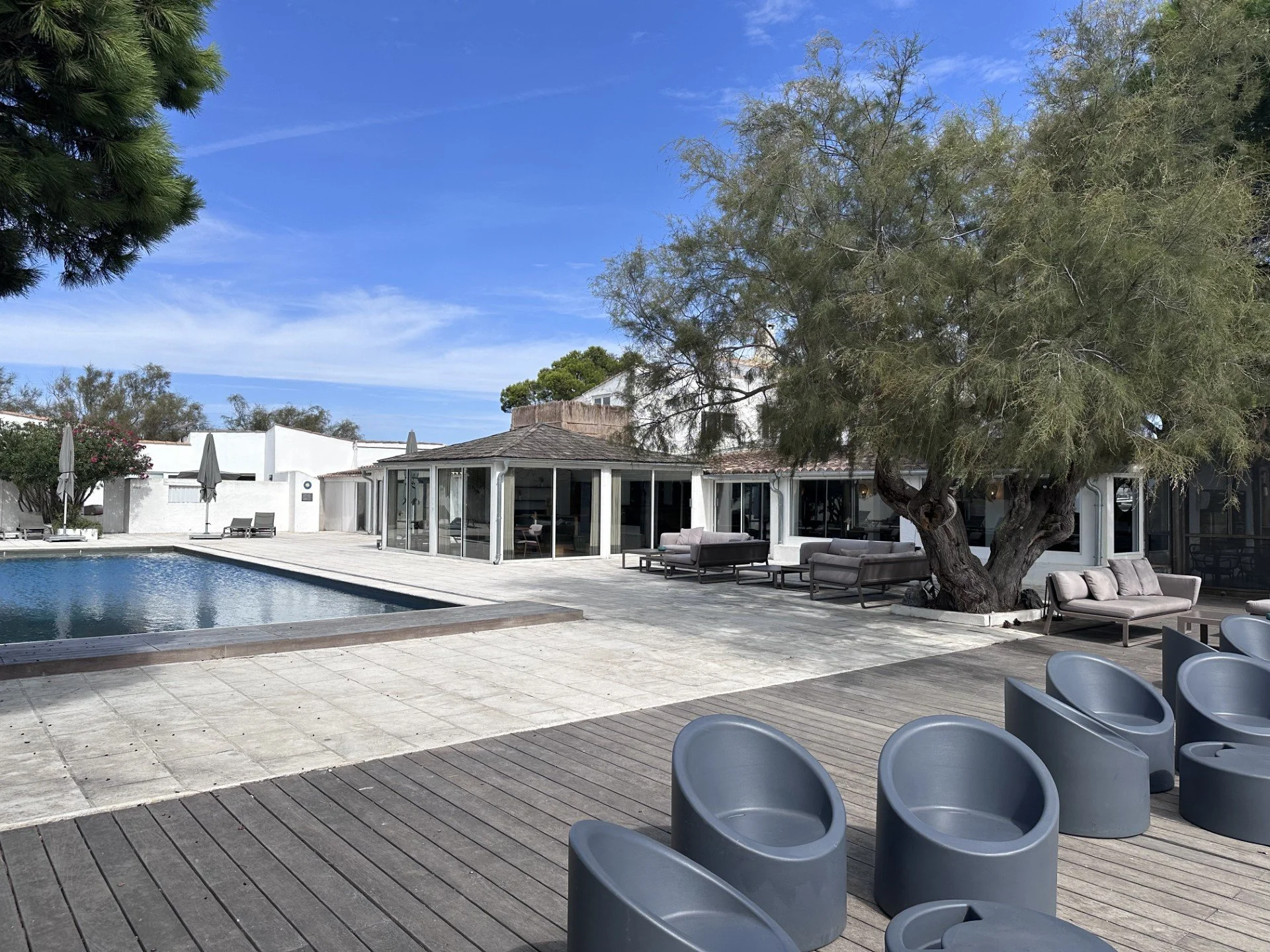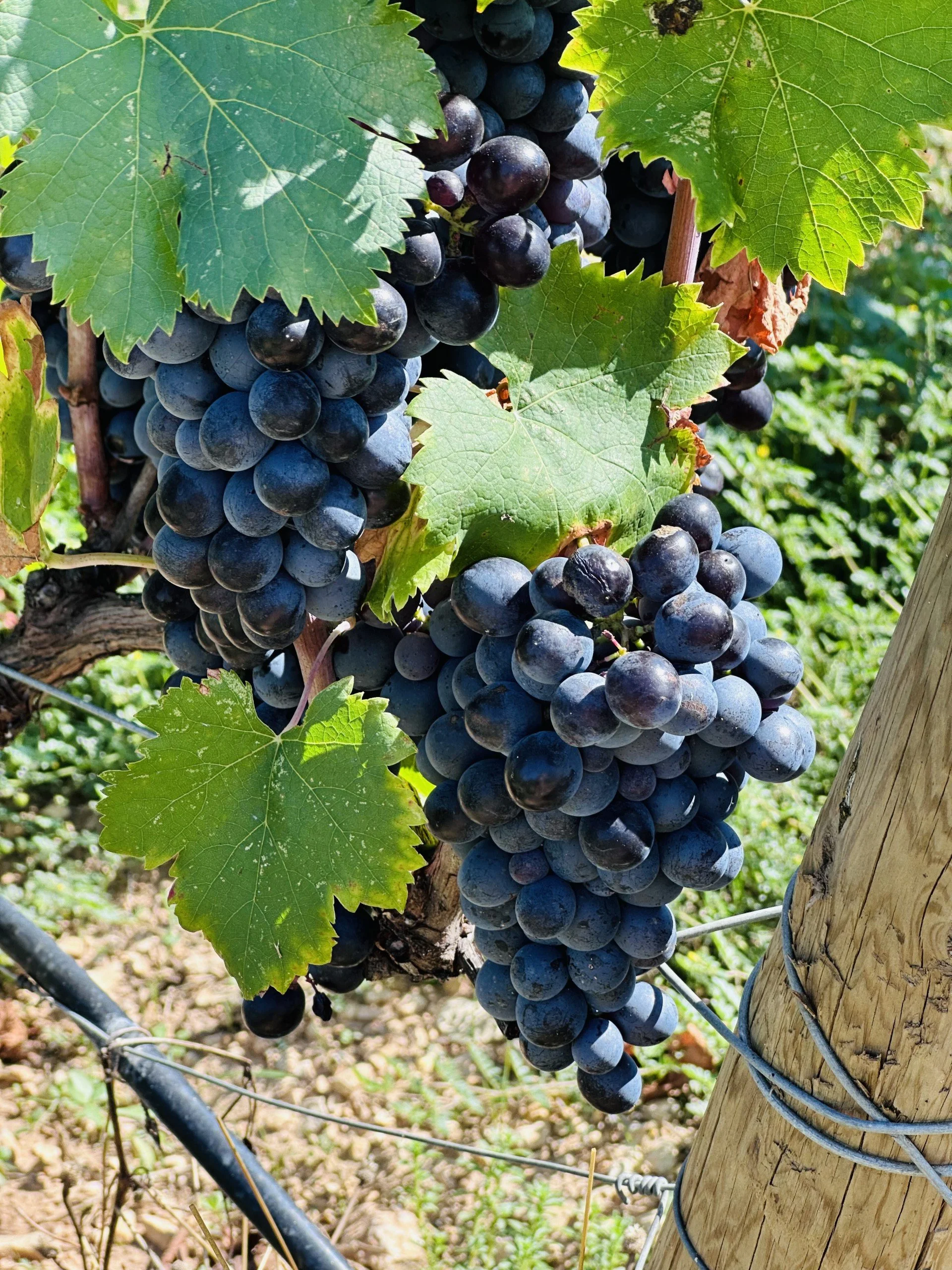From Burgundy’s Wine to Alpine Peaks: Visiting “Les plus beaux villages de France”
September 2025
Well hello there …
Last year, we embarked on our honeymoon to Bali, a dream destination, but one that came with its fair share of travel challenges. Between the long-haul flight, endless delays, and even damaged baggage, we quickly realised that sometimes travel can take more energy than it gives back.
Right then and there, we promised ourselves: next year’s holiday would be different.
No airports, no jet lag, no lost luggage, just the freedom of the open road.
France immediately came to mind. A few years back, in 2016, we took a family road trip along the country’s West Coast, from Bretagne all the way down to San Sebastián, and the memories of that trip are still vivid and cherished. The landscapes, the food, the charming villages, it had everything. So when planning our next getaway, we knew France was calling us back. This time, we mapped a route: from sipping wine in Burgundy to riding horses in the Camargue, wandering ochre trails in Provence, gazing at yachts in Saint-Tropez, boating on Lake Annecy, and losing ourselves in the fairy-tale streets of Colmar. Each region has a story, and together they became one nice new adventure.
Practical Wisdom
Total kilometres driven: About 3,400 km round-trip.
Duration: 13 days, 12 nights.
Travel time: We travelled in September, enjoying pleasant temperatures between 24 °C and 28 °C, with only two rainy days. The biggest perk? Everything was wonderfully calm. There were no long queues to enter St. Tropez, and we easily found parking near every city centre.
How much time per location?
Burgundy (Beaune): 1 night
Beaune was just a quick stopover on our way south. If you want to explore Burgundy in more detail, you’ll definitely need to stay longer.Camargue: 1 night
I would recommend at least 2 nights here, especially if you want to visit Arles and Les Alpilles.Provence (Luberon): 4 nights
Four nights in the Luberon felt just right, the region is incredibly beautiful with plenty to see. An extra night wouldn’t have hurt.Var / Côte d’Azur (Ramatuelle): 2 nights
Ramatuelle wasn’t originally in our plan, but it was a lovely addition. We only visited St. Tropez this time, as we’ve seen the other classic Côte d’Azur spots (St. Maxime, Nice, Monaco) on past trips. Being just 1 km from L’Escalet beach was tempting, though we didn’t get the chance to check it out. Port Grimaud also seems worth a visit. An extra night here would have been ideal for some more leisure time.Annecy: 2 nights
Two nights in Annecy were enough for us. We didn’t rent bikes, and didn’t explore the surrounding mountains, including the Mont Blanc, which would also have been a great addition if we had stayed longer.Alsace (Colmar and surroundings): 2 nights
Two nights were sufficient to enjoy Colmar and the surrounding Alsace region. We’re definitely looking forward to returning around Christmas!
Fun fact nuggets:
The Camargue is a natural wonderland, home to semi-wild white horses, black bulls, and flocks of pink flamingos.
Provence’s Sentiers des Ocres in Roussillon is nicknamed the “Colorado of France” for its striking red cliffs and surreal landscapes.
Gordes, Roussillon, Ménerbes, and Lourmarin are officially recognised as “Les Plus Beaux Villages de France,” showcasing the country’s most charming villages.
Ramatuelle / Saint-Tropez comes alive in summer with vibrant local festivals like the Fêtes des Belges, full of music, dancing, and seaside fun.
Annecy enchants visitors with pastel-colored buildings, winding canals, and a romantic old town, earning it the nickname “The Venice of the Alps.”
Colmar is home to the 16th-century Pfister House, whose painted façade is said to have inspired Disney’s Beauty and the Beast village scenes.
The Tourist Hotspots
Beaune
Beaune is the wine capital of Burgundy and a charming town full of history. Its highlight is the “Hospices de Beaune”, with its iconic multi-coloured tiled roof, a true feast for the eyes. Beyond the historic architecture, the region is dotted with vineyards and world-famous wine cellars, where tasting a Pinot Noir or Chardonnay is practically mandatory.
Hospices de Beaune
Camargue
The Camargue is a land unlike any other, a wild, open delta where nature and tradition thrive side by side. Its semi-wild white horses roam freely, while black bulls are raised for local festivals and traditional games. Flamingos are a regular sight, painting the wetlands in delicate pink hues, and birdwatchers can spot dozens of species, from herons to avocets. The area is also famous for its rice paddies and salt marshes of Aigues-Mortes, where the shimmering crystals of Camargue salt are harvested. The anchor often seen in local symbols reflects the region’s connection to its waterways. I went for a walk on horseback, and the day after, my husband and I joined a guided two-hour safari, which was an incredible way to explore the wild beauty of the area. A visit to Saintes-Maries-de-la-Mer, the cultural heart of the Camargue, offers insight into the Romani pilgrimages and the town’s charming coastal atmosphere.
Provence
Provence is a region of breathtaking scenery, vibrant colours, and historic villages. Highlights include:L’Abbaye de Sénanque, surrounded by endless lavender fields, a truly postcard-perfect sight in bloom if you come in June & July.
Sentiers des Ocres, a trail through the surreal ochre cliffs and surrounding woods, where reds, yellows, and oranges blend like a natural painter’s palette. You have 2 walking circuits, one of 35 minutes and the other of 50 minutes.
( Entrance fee € 3,5 pp )
The villages we visited each have their own personality:
L’Isle-sur-la-Sorgue: famous for its antique markets, canals, and charming riverside cafes. (Market on Sunday)
Gordes: perched atop a hill, with stone houses and winding streets that feel straight out of a storybook. (Market on Tuesday)
Roussillon: renowned for its red ochre cliffs and vibrant, warm-colored village façades.
(Market on Thursday)Lacoste: a small, tranquil village dominated by the ruins of the Marquis de Sade’s castle, offering dramatic views of the surrounding Luberon hills.
Ménerbes: cobbled streets and pastel houses, steeped in artistic history and Provençal charm. (Market on Thursday)
Lourmarin: a lively village with a Renaissance castle, colourful markets, and an inviting café culture. (Market on Friday)
Ramatuelle & Saint-Tropez
Ramatuelle is a quiet gem with cobbled streets, terraced houses, and easy access to L’Escalet beach, a secluded cove perfect for sunbathing or a swim. Saint-Tropez, just a short drive away, offers the quintessential Riviera experience: glamorous yachts in the harbour, chic boutiques, vibrant nightlife, and a lively promenade. While it can be busy in peak season, visiting in September allowed us to enjoy its charm without the crowds.
Annecy
Annecy, often called the “Venice of the Alps,” combines the beauty of a lake with a picturesque old town. We rented an e-boat to glide across Lake Annecy, surrounded by the Alps, but exploring the city centre was just as delightful: pastel-colored houses, narrow cobbled streets, charming canals, and a lively town square filled with cafes and shops.
Colmar & Alsace villages – Route des Vins d’Alsace
The Alsace region is a fairytale come to life, with timbered houses, flower-filled windows, and cobblestone streets. Each village along the Route des Vins d’Alsace has its own personality:Colmar: larger and livelier, with a beautiful old town, canals, and museums.
Eguisheim: a concentric medieval village with colourful houses and a cosy charm.
Riquewihr: perched in the vineyards, it feels like stepping back in time with fortified gates and historic streets.
Ribeauvillé: slightly larger than Riquewihr, blending medieval architecture with a bustling, welcoming atmosphere.
Alsace is also a paradise for wine lovers, producing distinctive varieties such as Riesling,
Gewürztraminer, Pinot Noir, and sparkling Crémant d’Alsace. We had memorable tastings at:
- Famille Hebinger in Eguisheim — exceptional Gewürztraminer.
- Trimbach in Ribeauvillé — famous for their elegant Riesling.
- Bott Frères in Ribeauvillé — delicious Crémant d’Alsace.
Would you like a table?
Beaune – Bistrot du Bord de l’Eau
Nestled by the river, this spot set the tone for the road trip: hearty, affordable Burgundian cuisine paired with pricey local wines. We had the pleasure of sitting outside, under a charmingly decorated barn, which made the experience even more inviting.
Provence – L’Estoublon
Dining at L’Estoublon was delightful. Surrounded by olive groves and a vineyard estate, our table was filled with refined Provençal dishes. The estate’s olive oil was so aromatic and bottled stylishly like perfume, and the exquisite Rosewood Rosé wine tempted us to take home a few bottles from the adjoining gift store. It was a truly glamorous lunch experience.
Roussillon – Omma
A 3-star hotel restaurant nestled in the heart of the village with views on the ochre rocks. While the amuse-bouches were a bit rustic, every course from starter to dessert showed a clear upward trajectory. Service was attentive, the dining room slightly old-fashioned, but the quality of the food made up for it.
Ramatuelle – La Forge
A genuine Italian table right in the heart of the village, serving ristorante-style dishes made with carefully selected ingredients from Italy, from classics like vitello tonnato and osso buco gremolata to seasonal inspirations. Service is warm and friendly, with a touch of Italian cautious charm. A solid, authentic choice for lovers of Italian cuisine. It’s not cheap, but the quality of the food makes it worth the price.
Ramatuelle – Les Moulins
In my view, Les Moulins felt like a popular hipster spot in Ramatuelle, with its magical garden, it’s easy to see why. The restaurant was buzzing with guests, yet they managed to deliver high-quality food and attentive service. It had a touch of Saint-Tropez glamour, but far less exuberant and more relaxed.
Annecy – Les Quatre Gourmets
A nice modern Italian bistro in the heart of Annecy. Think wood-fired pizzas, handmade pasta, cheerful service and a buzzing atmosphere that instantly makes you feel comfortable. The beef tagliata seemed to be a good choice.
Annecy – Irma
A bustling favourite with locals and tourists alike, Irma was just a three-minute stroll from our hotel. The open kitchen, lively crowd, and energetic vibe mean it’s not for a quiet, romantic dinner, but the fish is fresh and perfectly prepared. A must-visit for seafood lovers who don’t mind a bit of buzz.
Colmar – Bord’Eau
Set along Colmar’s canals with views of charming half-timbered houses, Bord’Eau serves traditional Alsatian cuisine in a warm, inviting setting. The sommelier recommended superb local wines like Riesling and Gewürztraminer, inspiring us to visit nearby wine houses the next day. The restaurant is owned by Chef Benoît David, connected to the 2-star Michelin Chef Jean-Yves Schillinger, whose starred restaurant was at our hotel, L’Esquisse.
Good night, sleep tight!
Novotel Beaune 4*
Convenient and comfortable for a first Burgundian stop. Located about a 10–15-minute drive from the city centre, it was a practical base to kick off our trip after a long day on the road.
Mas de la Fouque 4 * (Camargue)
A serene Boho-style retreat surrounded by marshland and white horses. A peaceful setting by the lake that gives you the true Camargue vibes. The WiFi and air conditioning didn’t always cooperate, and the restaurant staff seemed a bit short-handed, but the food was good and the location made up for it.
Le Mas des Herbes Blanches 5* (Provence)
A top Relais & Châteaux hotel, offering comfort, calm, and those stunning Luberon views. Our room was cosy and elegant, the atmosphere wonderfully relaxed. The pool wasn’t huge but perfect for cooling off, and we loved our jeux de boules games with a pastis in hand. Breakfast (and one dinner) on the rooftop terrace came with breathtaking panoramic views. Prices for food and drinks were on the higher side, but the minibar was included.
Hotel L’Escalet 4*, Ramatuelle
Two nights of seaside bliss in a boutique setting. With its Boho touches, L’Escalet felt relaxed yet stylish. Breakfast by the pool bar was simple but good, the pool itself beautifully heated, though the lounge chairs were set a bit too close together. A perfect base for exploring Saint-Tropez without the crowds.
Rivage Hotel & Spa 4* (Annecy)
Modern, stylish, and spotless, just across the street from the lake. Our room had a large terrace with side lake views, though trees partly blocked the scenery. Comfortable and functional, but it missed a bit of the charm and “soul” we felt in Mas des Herbes Blanches. The staff were polite, though less service-minded than elsewhere.
L’Esquisse Hotel & Spa 5* (Colmar)
A beautiful, design-forward hotel from MGallery where luxury meets fairytale. Our room was stunning, completely my style, and some of the decor items were even available for purchase. Clarins toiletries, a chic bar, and a 2-star Michelin restaurant next door (though we didn’t try it) completed the experience. Perfectly located in a quiet area, just a five-minute walk from the city centre.
Alternative hotels we could’ve tried.
Here are some alternative boutique and luxury options for the places we visited:
Beaune
Hostellerie Cèdre & Spa 5* • Hôtel Henry II 4*Camargue
Lodge Sainte Hélène • Les Bains Gardians 4* • Hôtel Restaurant Les Arnelles 4*Provence
Domaine de Fontenille 4* • La Bastide du Mourre 4* • Domaine de Chalamon 4* •
Le Couvent des Minimes 5* • Capelongue 5*Ramatuelle / Saint-Tropez
La Réserve Ramatuelle 5* • Villa Marie Saint-Tropez 5* • Tinah Saint-Tropez 4* •
Hotel Tartane 5* • Hotel Lou Pinet 5*• Muse Saint-Tropez 5*• Hotel des Lices 4*Annecy
Villa Caroline 4* • Black Bass Hotel 5* • Hôtel Beau Site Talloires 3*Colmar
James Boutique Hotel 4*• La Maison des Têtes 5* • Le Colombier 4*
I could give up shopping, but I’m not a quitter.
From colourful markets to elegant boutiques and gourmet treasures, each region tempted us in its own way and, well, who are we to resist?
Beaune
In Burgundy, wine truly is the ultimate souvenir. The region is known for its Pinot Noir (red) and Chardonnay (white), world-class wines that can be as refined as they are pricey. Most wine shops and cellars in Beaune offer tastings, making it hard to leave empty-handed.
Camargue
A must-buy here is Camargue sea salt, harvested from the shimmering pink salt marshes of Aigues-Mortes.
Provence
We went all in at the markets of Roussillon and Lourmarin, filling our bags with lavender, honey, cheese, salami, fresh artichokes, coconut macaroons, tapenades, herbes de Provence, and calissons (those delicious almond candies from Aix-en-Provence).
The boutique at Château d’Estoublon was another highlight, beautifully curated and impossible to leave empty-handed. We stocked up on their olive oil and rosé wine.
Saint-Tropez
Don’t miss trying the famous Tarte Tropézienne, the sweet, creamy brioche that has become a local legend.
Alsace
If Burgundy is about reds, Alsace is all about the whites. We couldn’t resist a few bottles of Riesling, Gewürztraminer, and Crémant d’Alsace, plus some buttery Alsatian biscuits from Maison Alsacienne de Biscuiterie. And while it’s not exactly something to bring home, trying a flammekueche (Alsatian flamtarte) fresh from the oven is an absolute must—thin, crispy, and topped with all the savory goodness you’d hope for.
"France has the only two things towards which we drift as we grow older—intelligence and manners." – F. Scott Fitzgerald













































